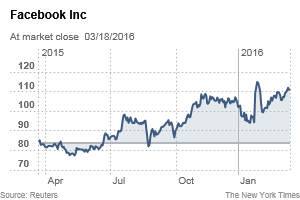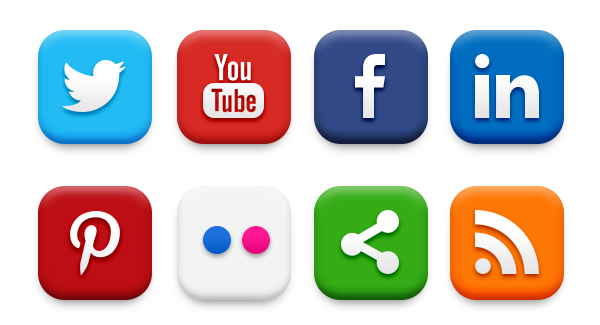Right now, we are exiting the eye of the giant financial hurricane that we entered in 2007, and we’re going into its trailing edge. It’s going to be much more severe, different, and longer lasting than what we saw in 2008 and 2009.

In a desperate attempt to stave off a day of financial reckoning during the 2008 financial crisis, global central banks began printing trillions of new currency units. The printing continues to this day. And it’s not just the Federal Reserve that’s doing it: it’s just the leader of the pack. The U.S., Japan, Europe, China…all major central banks are participating in the biggest increase in global monetary units in history.
These reckless policies have produced not just billions, but trillions in malinvestment that will inevitably be liquidated. This will lead us to an economic disaster that will in many ways dwarf the Great Depression of 1929–1946. Paper currencies will fall apart, as they have many times throughout history.
This isn’t some vague prediction about the future. It’s happening right now. The Canadian dollar has lost 26% of its value since 2013. The Australian dollar has lost 29% of its value during the same time. The Japanese yen and the euro have crashed in value. And the U.S. dollar is currently just the healthiest horse on its way to the glue factory.
These moves show that we’re in the early stages of a currency crisis. But if you make the right moves, you could actually make windfall gains instead of suffering losses. Here’s how to do it…
The huge winner during this crisis will be the only currency that has real value: gold.
Gold has been used as money for thousands of years because it has a unique combination of qualities. Very briefly, it’s durable, easily divisible, convenient to carry, consistent around the world, and has value in and of itself. Just as important, governments can’t create gold out of thin air. It’s the only financial asset that’s not simultaneously someone else’s liability.
When people wake up and realize that most banks and governments are bankrupt, they’ll flock to gold…just as they’ve done for centuries. Gold will rise multiples of its current value. I expect a 200% rise from current levels, at the minimum. There are many reasons, which we don’t have room to cover here, why gold could see a 400% or 500% gain.
This should produce a corresponding bull market in gold stocks…perhaps of a magnitude we’ve never seen. A true mania for gold stocks could develop over the coming years. This could make anyone who buys gold stocks at their current depressed levels very rich.
What History Teaches Us About Great Speculations
Many of the best speculations have a political element to them.
Governments are constantly creating distortions in the market, causing misallocations of capital. Whenever possible, the speculator tries to find out what these distortions are, because their consequences are predictable.
They result in trends you can bet on. Because you can almost always count on the government to do the wrong thing, you can almost always safely bet against them. It’s as if the government were guaranteeing your success.
The classic example, not just coincidentally, concerns gold.
The U.S. government suppressed its price for decades while creating huge numbers of dollars before it exploded upward in 1971. Speculators who understood some basic economics positioned themselves accordingly. Over the next nine years, gold climbed more than 2,000% and many gold stocks climbed by more than 5,000%.
Governments are constantly manipulating and distorting the monetary situation. Gold in particular,
as the market’s alternative to government money, is always affected by that. So gold stocks are really a way to short government—or go long on government stupidity, as it were.
The bad news is that governments act chaotically, spastically.
The beast jerks to the tugs on its strings held by various puppeteers. But while it’s often hard to predict price movements in the short-term, the long-term is a near certainty. You can bet confidently on the end results of chronic government monetary stupidity.
Mining stocks are extremely volatile for that very same reason. That’s good news, however, because volatility makes it possible, from time to time, to get not just doubles or triples but 10-baggers, 20-baggers, and even 100-to-1 shots.
When gold starts moving higher, it’s going to direct a lot of attention towards gold stocks. When people get gold fever, they are not just driven by greed, they’re usually driven by fear as well, so you get both of the most powerful market motivators working for you at once. It’s a rare class of securities that can benefit from fear and greed at once.
Remember that the Fed‘s pumping-up of the money supply ignited a huge bubble in tech stocks in the late 90’s, and then an even more massive global bubble in real estate that burst in 2008. But they’re still creating tons of dollars.
This will inevitably ignite other asset bubbles. Where? I can’t say for certain, but I say the odds are extremely high that as gold goes up, a lot of this funny money is going to be directed into these gold stocks, which are not just a microcap area of the market but a nanocap area of the market. The combined market capitalization of the 10 biggest U.S.-listed gold stocks is less than 29% of the size of Facebook.
I’ve said it before, and I’ll say it again: When the public gets the bit in its teeth and wants to buy gold stocks, it’s going to be like trying to siphon the contents of the Hoover Dam through a garden hose.
Gold stocks, as a class, are going to be explosive. Now, you’ve got to remember that most of them are junk. Most will never, ever find an economical deposit. But it’s hopes and dreams that drive them, not reality, and even those without merit can still go up 10, 20, or 30 times your entry price.
And companies that actually have the goods can go much higher than that.
You buy gold, the metal, because you’re prudent. It’s for safety, liquidity, insurance. The gold stocks, even though they explore for or mine gold, are at the polar opposite of the investment spectrum; you buy them for their extreme volatility, and the chance they offer for spectacular gains. It’s rather paradoxical, actually.
Why Gold Stocks Are an Ideal “Asymmetric Bet”

Because these stocks have the potential to go 10, 50, or even 100 times your entry price, they offer something called “asymmetry.”
You probably learned about symmetry in grade school. It’s when the parts of something have equal form and size. For example, cut a square in half and the two parts are symmetrical.
Symmetry is attractive in some forms. The more symmetrical someone’s face is, the more physically attractive they are considered to be. Symmetry is often attractive in architecture.
But when it comes to investing and speculating in the financial markets, the expert financial operator eschews symmetry. Symmetry is for suckers.
The expert financial operator hunts for extreme asymmetry.
An asymmetric bet is one where the potential upside of a position greatly exceeds its potential downside. If you risk $1 for the chance of making $20, you’re making an asymmetric bet.
Amateur investors too often risk 100% of their money in the pursuit of a 100% return. These are horrible odds that the financially and statistically illiterate flock towards…the kind you find in casinos and most sports betting. It’s one of the key reasons most people struggle in the market.
I’ve always been more attracted to asymmetric bets…where I stand a good chance of making 10, 50, even 100 times the amount I’m risking. I’m not interested in even bets. I’m only taking the field if my potential upside is much, much greater than my potential downside.
Because of the extreme asymmetry gold stocks offer—because of their extreme upside potential—you don’t have to take a big position in them to make a huge impact on your net worth. A modest investment of $25,000 right now could turn into $500,000 in five years. It has happened before and it will happen again.
Right now gold stocks are near a historic low. I’m buying them aggressively. At this point, it’s possible that the shares of a quality exploration company or a quality development company (i.e., one that has found a deposit and is advancing it toward production) could still go down 10, 20, 30, or even 50 percent. But there’s an excellent chance that the same stock will go up by 10, 50, or even 100 times.
I hate to use such hard-to-believe numbers, but that is the way this market works.
When the coming resource bubble is ignited, the odds are excellent we’ll be laughing all the way to the bank in a few years.
No one, including me, knows that the Mania Phase is just around the corner. But I’ve operated in this market for over 40 years. This is a very reasonable time to be buying these stocks. And it’s absolutely a good time to start educating yourself about them.
There’s an excellent chance a truly massive bubble is going to be ignited in this area. If so, the returns are going to be historic.
If you believe that my message is worth spreading, please use the share buttons if they show at the top of the page.
Stephen Hodgkiss
Chief Engineer at MarketHive
markethive.com
Al Zibluk









